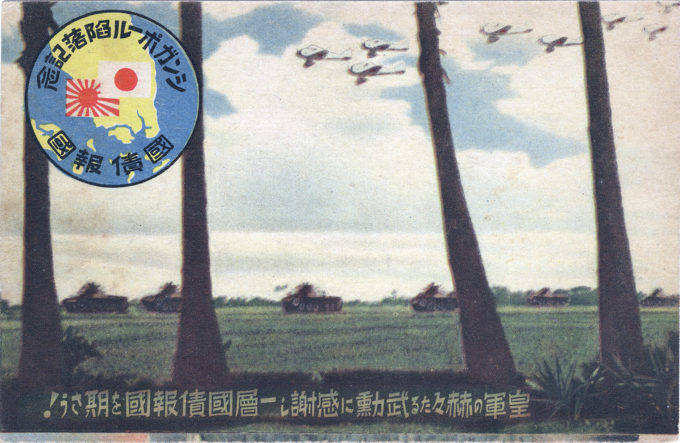“The city [Singapore] was buzzing with the wildest rumours – that the Japanese had been pushed back into the sea, that their advance troops had reached the Botanical Gardens, only three miles up the road, that Japanese parachutists had tried to seize the Singapore broadcasting station in Thompson Road, that American troops had landed at Penang. Nor was it possible to secure at military headquarters an accurate picture of what was happening.
“During the morning our Command was in the process of moving back on Fort Kalang from the advanced positions in the north of the island. No reports were coming in from the field because the officers who were directing operations had no time to send them. The headquarters of the Australian military forces on the Bukit Timah road had had another terrific bombing.
“One thing alone seemed to stand out clearly. The Japanese were advancing on Singapore city, and advancing pretty quickly at that. The time seemed to have come to make a move.
“Black smoke hung fatefully over the whole island. There had been enough oil on the island to fill Japan’s war-time requirements for three months. Most of it was now ablaze. In one place it rose upwards above the layer of black smoke in a great white column like the eruption of a volcano.
“Your correspondent, taking with him nothing but a woollen sweater, three tins of tobacco, a water bottle, and a handbook of the Netherlands East Indies, engaged a small sampan. An amazing sense of relief flooded one’s whole being as soon as one found oneself no longer upon land but on water. A small freighter was in the roads with steam up. Half an hour later it sailed.
“… The voyage to Batavia was quiet and uneventful. Three times aeroplanes flew overhead, but always at a very great height, and they did not molest the ship. Such luck was not enjoyed by other ships which left Singapore about the same time. Several were bombed and machine-gunned by Japanese ’planes. It is reported that some were sunk. It is not possible yet to get precise details.”
– “The Fall of Singapore”, from our Special Correspondent, Manchester Guardian, February 16, 1942

Conquest of Singapore, 1942, depicting the Japanese advance down the Malay peninsula toward Singapore. The image is misleading. Because extensive palm rubber plantations proved to be obstacles for Japanese heavy tanks, much of the advance by the 25th Army to Singapore was made on bicycle and in light armored vehicles.
The Imperial Japanese Army occupied Singapore after defeating the combined British, Indian, Australian, and Malayan garrison in the Battle of Singapore (Feb. 8-15, 1942). The outcome resulted in the largest surrender of British-led military personnel in history – 80,000 British, Indian and Australian troops became prisoners of war, joining 50,000 taken earlier by the Japanese in the Malayan Campaign. The British prime minister, Winston Churchill, called it the “worst disaster in British military history.” Japan’s occupation of Singapore (renamed Syonan-to, “Light of the South”) was to become a major turning point in the histories of several nations, including those of Japan, Britain, and the then-colonial state of Singapore.

